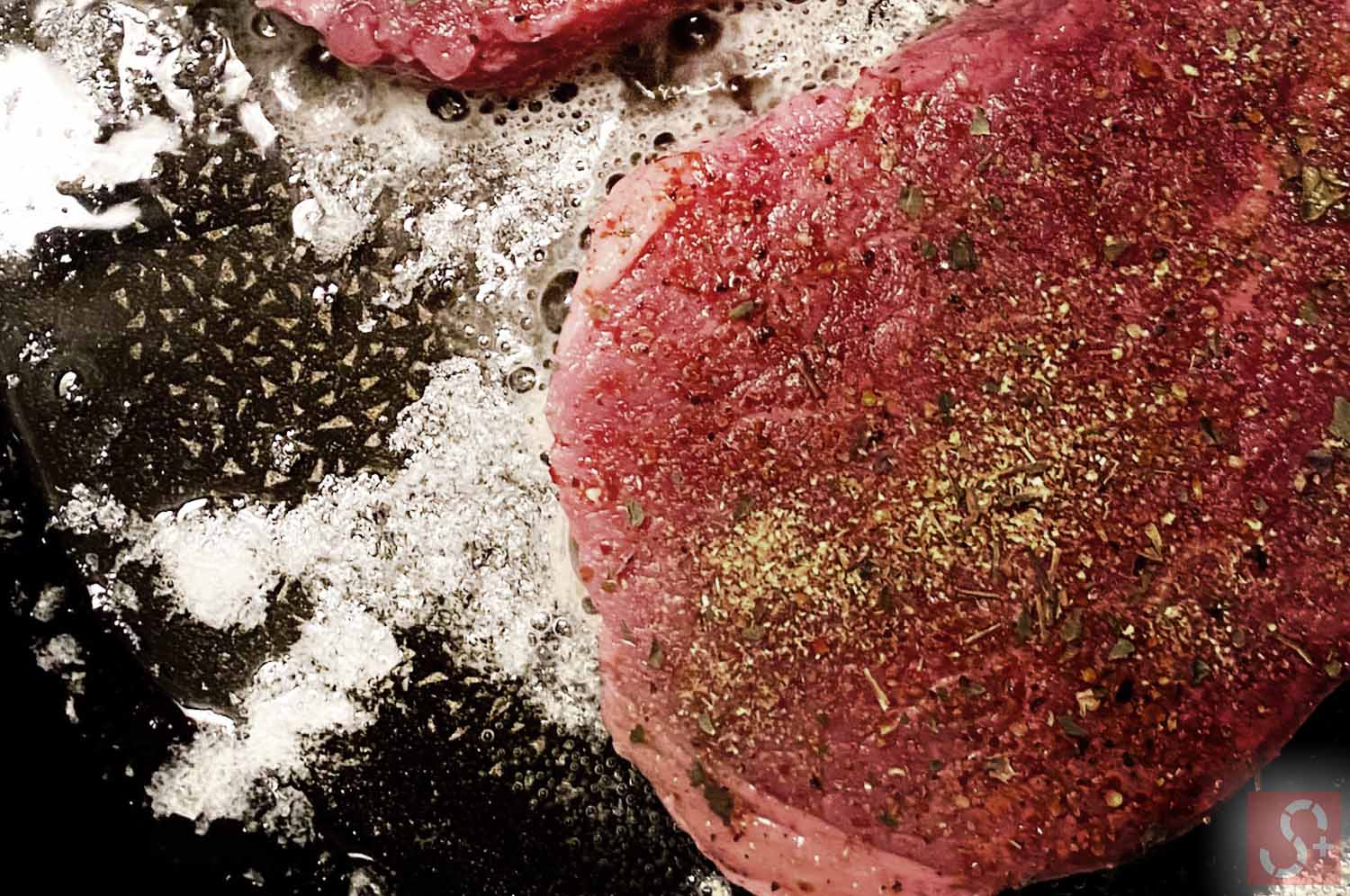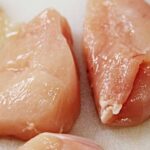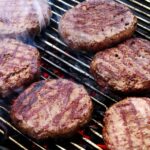Steaks are meant to be juicy, moist, and full of delicious meaty flavor. And as much as we all enjoy having steak for dinner, it makes it all the more appealing to know that we’ve cooked and prepared our steak ourselves from pan to plate.
However, if you’re new to cooking steak, you will find that some major changes and occurrences happen when your steak goes through the chemical process from raw to perfectly cooked on the pan or skillet.
One of the most visible occurrences is white stuff coming out of steak when cooking.
Let’s explore what this white stuff actually is.
White ooze comes out of steak when cooking
You’ll notice that when you cook steak, there is some white ooze that comes out when you cook. If you’re worried that this white ooze could be anything unsafe to eat, you can stop worrying now. This white stuff is basically a mixture of water, fat, and protein that is naturally found on steak, beef, pork, or chicken.
Unless your meat is noticeably bad (bad smell, looks stale, strange texture), then you have absolutely nothing to worry about when it comes to the white ooze that comes out of your steak when you cook it.
Is the meat safe to eat?
Yes! It is safe to eat. There are several kinds of connective tissues that are found in meat. The more obvious ones are the tendons – which are responsible for connecting your bones and muscles together, and ligaments, which join bones together.
Additionally, animal meat contains an abundance of protein that is called collagen. Collagen is a tough nutrient that wraps up muscle fibers like a sheath, protecting them from injury or tearing when the muscles are put to work.
This is why collagen in a cow’s muscles is a lot tougher in the muscles around the legs and shoulders (which get a lot of exercise), while muscles around the back and ribs (which gets less exercise) are more tender and consist of softer collagen.
When your steak cut is cooked, this collagen breaks down after being exposed to heat. This softens your steak cut as it melts away, which joins with the rest of the water, fat, and protein mixture that turns into a white ooze when it cooks on the pan.
In what conditions does this occur the most?
Before we answer this question, let’s first establish that steak cuts come in a variety of sizes and fat percentages.
Adding to that, we also have to consider whether the cows that produced the steak cut were grain-fed, or grass-fed.
When you go to the butcher shop, or if you pass by the steaks aisle in the grocery store, you’ll have probably seen a kind of steak that has a multitude of swirls of white stuff across the entire cut of steak. This is called marbling – and it is widely believed that steak cuts that have good marbling are the best quality steaks you can find.
Fat can be found on every piece of steak. There are mainly 3 types of fat – subcutaneous fat, intermuscular fat, and intramuscular fat.
Subcutaneous fat is the layer that exists between the skin and the lean muscle tissue – this is usually trimmed off by the butcher or by anyone preparing the steak, as this fat does not add any benefit to the steak cut.
Intermuscular fat is the fat that forms in between different muscles – this fat has a scraggy texture and is also usually removed before cooking.
Intramuscular fat, A.K.A marbling, is fat that exists inside the muscle itself. You can tell it apart from other types of fat by its thin, creamy white streaky texture that is a big contrast against the red flesh of the meat that encases it.
So the better the quality of your steak cut (more marbling), the more white ooze occurs while cooking as the fat, collagen, and protein mixture melts when exposed to heat.
Can I reduce or stop this from happening?
If you find that your steak cuts are oozing too much white stuff, you might be cooking your steaks at too low a temperature. If you’re freezing your steaks to cook them in the future, there is a higher chance of white ooze occurring while cooking, too.
Why this happens is because when you freeze your steaks, the coagulated mixture of protein, fat, and other natural juices in your steak seizes up as well.
And if you don’t give these juices a chance to warm up to room temperature, it denatures very quickly, releasing a lot more water and soluble protein when it is exposed to high heat.
To reduce the occurrence of white ooze coming out from your frozen or chilled steak while cooking, you’ll want to ensure that your steak goes up to room temperature before you cook it.
Can this happen to other types of meat?
Yes, this occurrence also happens to meat such as salmon and chicken. This white ooze is pretty much the same stuff – a mix of fat, protein, water, and natural juices.
Conclusion
Now we know that white stuff coming out of your steak while it cooks is a normal thing, and is a very common part of the cooking process.
In fact, having a bit of white ooze coming out from your steak while it is cooking on a hot surface only means that you will have a juicy and tender steak at the end of cooking.
However, always ensure that the steak cut that you are cooking is not expired, and it does not smell funny.
More often than not, people mistake white ooze coming out from their steaks as a sign that their meat has gone bad, but while the white ooze is a normal occurrence, you should always check your steak before you cook it to make sure you’re not handling a bad, potentially stomach-upsetting piece of steak
Photo altered by simplelifesaver.com | Photo attribution: MILAN GAZIEV








